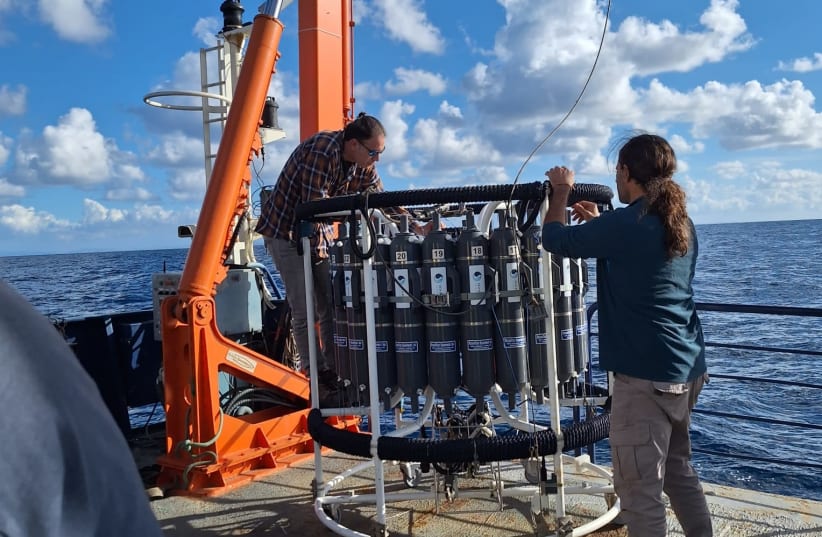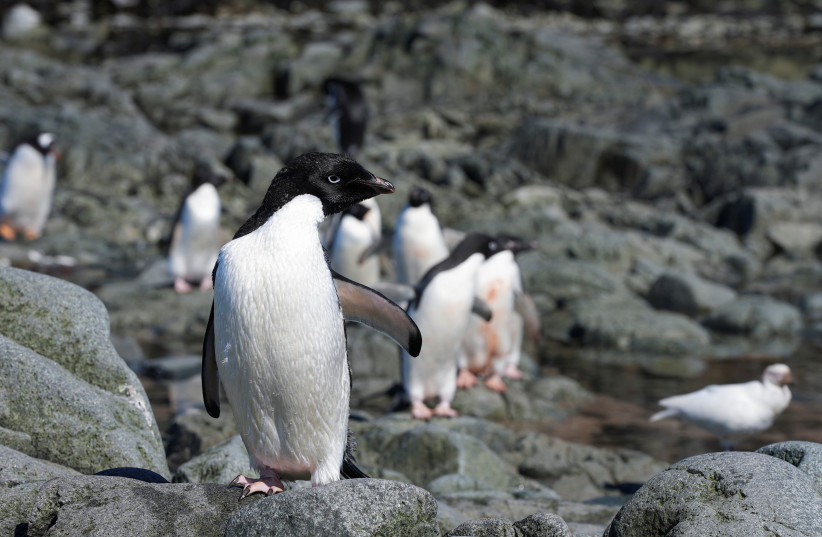With artificial intelligence (AI) being presented by scientists and physicians as a cure-all for many problems faced by man, experts are taking a close look at the real potential of this simulation of human intelligence processes by computers and other machines to help deal with them.
One of these dilemmas is pollution of the seas by chemicals, metals, microplastics, and oil spills – not to mention excessive fishing and the release of invasive species.
About 5.25 trillion tiny pieces of plastic – or more than 600 pieces for each of the three billion people on Earth – have entered the oceans and seas, and as every year passes, eight million tons more are added. All of this pollution, made more complicated by global warming, severely damage coral reefs and lead to the collapse of many animal and plant species that depend on them.
Digital routes to sustainability
A new study published in the prestigious Nature Group’s journal Ocean Sustainability under the title “Digital twins: a stepping stone to achieve ocean sustainability?” was led by Dr. Asaf Tzachor, the acting dean of Reichman University’s School of Sustainability in Herzliya reveals the potential of AI-based ocean simulations to prevent pollution, degradation, and large-scale damage to marine ecosystems.
“While public attention is directed toward the climate crisis, another equally catastrophic crisis is unfolding in the oceans,” Tzachor said. “These crises are interlinked and can’t be resolved independently; the state of the climate and the oceans are interconnected and influence each other both directly and indirectly. We already have the technological tools, and by repurposing AI systems, we can mitigate damage to the marine environment.”
He added that Israel, “with its abundant talent, technological expertise, and extensive coastline relative to its territory could serve as a pilot site for these technologies and become a significant player in this field. The necessary will is the only missing component.”
Ofir Hendel, a graduate of Reichman’s double major program in sustainability and economics with high honors, coauthored the study from the other side of the world, at the Universidad San Francisco de Quito in the Galapagos Islands.
The team describes the potential of using AI, autonomous robots, and “digital twins” technology (a type of large-scale real-time simulation) to help cope with the overexploitation of marine natural resources, prevent pollution, and slow the decline of ecosystems in the seas and oceans.
Covering about two-thirds of the Earth’s surface, the oceans provide humanity with essential resources such as food, oxygen, and a stable climate. They are a habitat for a vast collection of species that are a significant source of protein for those living on this planet and provide a livelihood for a tenth of them. The oceans also store about a third of the carbon dioxide released by human lungs and also absorb most of the excess heat generated by greenhouse gases. Scientists now estimate that more than 250,000 different species of life and plants live in the oceans and seas, with less-conservative estimates suggesting that the actual number of species may be more than two million.
The new study analyzes a series of AI-based systems meant for real-time monitoring, automation, and short- and long-term predictions of various factors affecting ocean health. The Herzliya researchers propose a novel smart-systems “architecture” for predicting the location and timing of illegal fishing in ocean waters that accounts for up to a fifth of the world’s total fish catch and causes serious damage to entire populations of marine species, including sharks, whales, and swordfish.
Innovative artificial intelligence models can synthesize and analyze data from a variety of sources, such as historical records, real-time satellite feeds, autonomous marine robots, detectors, and sensors. These models can identify the locations of ships, including those not broadcasting their positions as demanded by law, and assess which vessels are carrying out illegal fishing such as the use of bottom-trawling techniques. By cross-referencing this information with data about the marine environment, the models can predict where illegal fishing is occurring and direct local enforcement units to intercept the vessels.
The researchers call for the development of virtual models to simulate fish populations with the aim of conducting future simulations on the state of these populations under varying fishing conditions. Based on these simulations, they aim at preparing recommendations to ensure sustainable fishing practices for the long term. This approach is particularly focused on species such as the bluefin tuna, which is at risk of dying out and needs significant conservation efforts.
The study also investigates the potential of AI to prevent oil spills by analyzing data from sensors installed on oil rigs, pipelines, and ships. These systems could predict and warn of potential failures and malfunctions, allowing for repairs to be made before any leaks occur and forecast the potential impact of extreme weather events like tropical storms and thunderstorms – that are increasing in intensity – on gas and oil infrastructure, and develop recommendations to reduce these impacts.
In the event of an oil spill, such as the 2010 Gulf of Mexico disaster – considered one of the greatest environmental catastrophes in human history – AI models could play a vital role in crisis management and recommend optimal response strategies by evaluating all relevant parameters and integrating real-time information on weather conditions, wind and current patterns, animal populations, beaches, and critical coastal infrastructure, including desalination plants.
Hendel added that “in the mornings, we went on research dives in the Pacific Ocean and collected data. In the afternoons, we analyzed the data and witnessed the damage that humans inflict on the marine environment. In the evenings, we explored how one of today’s most advanced and promising technologies — artificial intelligence — can help protect this vital resource. The list of applications is long and holds great potential. The technology exists; it simply needs to be repurposed.”

